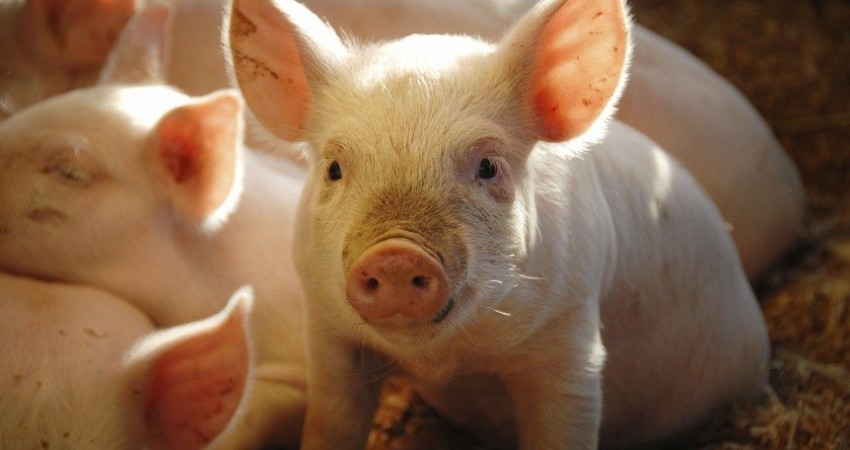

Just like humans, having good gut health is important for the overall health of a pig. This is especially important in young pigs as it is easier to get started on the right foot rather than have to repair damages and digestive complications on down the road. Since the gut of a pig correlates with immune function, it is the first line of defense a pig has against illness. A healthy gut also lends to normal growth and optimal performance throughout the life of a pig. When you consider all of this, taking care to ensure your pigs have the healthiest gut possible is a no-brainer.
The first step towards gut health in a pig is ensuring that piglets get colostrum from their mothers. The suckling of colostrum improves the survival rate of piglets through providing protein, energy, Vitamin D, and maternal antibodies. It also gets the immune system of piglets going by adding immunoglobulins to kick-start the pig’s immune system.
Without immunoglobulins, piglets are at risk for disease and even death as they do not have their own source of immunity; immune protection must transfer from sow to piglets through the first feeding of colostrum. Since the gut of a piglet is porous, consumption of colostrum is essential to the development of beneficial micro-flora. Other gut health benefits include improved daily gain, increased nutrient absorption, and a reduction of harmful bacteria, especially those types that lead to mortality in young pigs.
Once you have established good gut health in your piglets, it can be maintained through feed selections that continue to increase good gut bacteria as well as decrease water loss and prevent inflammation from occurring inside the gut. To achieve this balance, gut environment enhancers should be incorporated with a diet that also consists of easily digestible carbohydrates, protein that is of good quality, and low allergenic soy proteins. Such a feeding regime will be benefited further by maintaining gut micro-flora (Lactobacillus and Bifidobacteria, for example) which works to prevent harmful gut bacteria from absorbing nutrients that your pigs need.
Something else you want to maintain is the existence of normal gut epithelial cells (cells that line the cavities in the body) in the intestine. When normal, these cells have tight junctions which act as a barrier that protects against leakage of undigested food from the gut into the bloodstream. If your pig instead has leaky junctions, this could take shape in the form of fewer junctional strands or those that have breaks in them, creating a problem when it comes to retaining moisture, nutrients, and good bacteria in the gut. Higher feed intake upon weaning can also aid in the prevention of intestinal damage while enhancing nutrient absorption and reducing bacterial presences, such as that of E. coli.
Also obtained through higher feed intake are longer intestinal villi, the increased area of which makes for more intestinal surface and thus more intestine available for nutrient absorption. The more surface area present, the less distance nutrients must travel for absorption, thus the more affective nutrients become, and since villi are connected to blood vessels, those nutrients in turn arrive in the blood sooner.
In short, good gut health from the get-go is important for the overall, long term health of a pig. The better the health in the gut, the more effectiveness obtained through feeding and the more effective the intestines are at retaining good bacteria. Other benefits include a lower mortality rate of piglets, less chance of scours developing, not to mention the time and labor saved caring for healthy pigs versus those with ailments. When it comes to the investment that is a pig, be it a personal pig or a marketable animal, giving that pig the best possible gut health will be the best thing for you in exchange, whether you promote and sell that pig or it grows old in your backyard.
 Contact Jaguza Support
Contact Jaguza Support